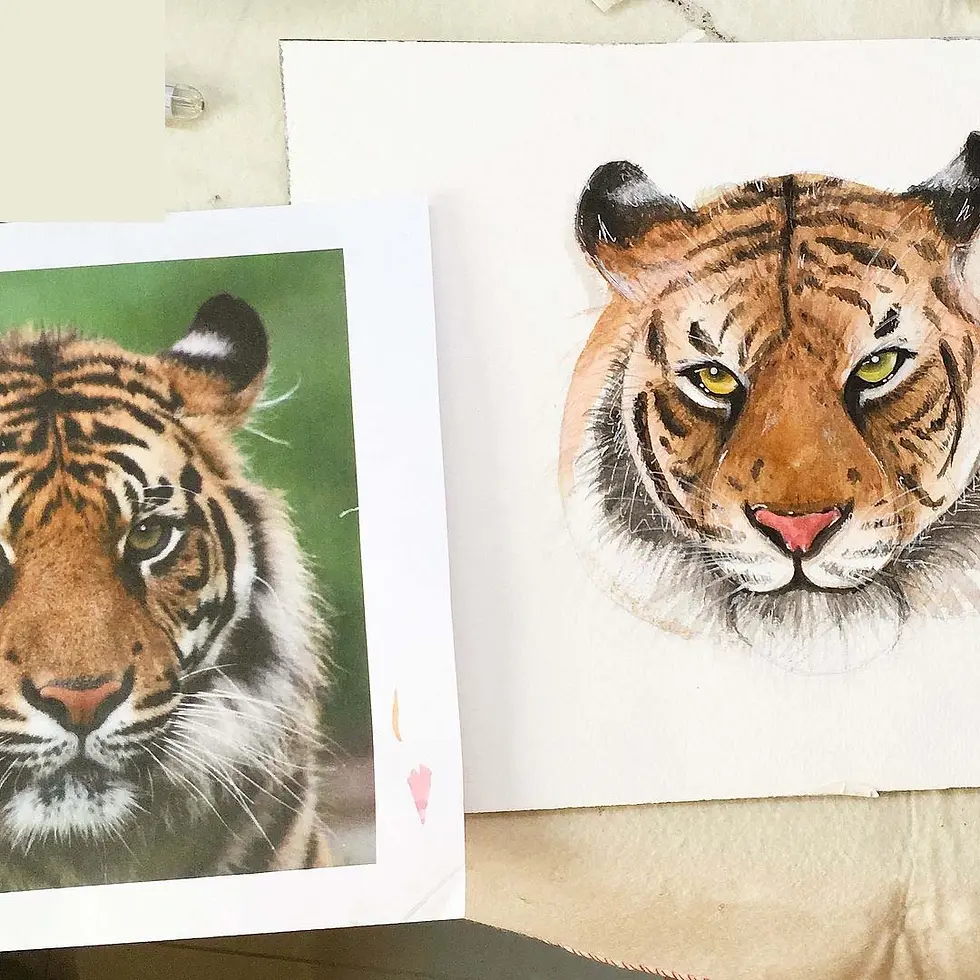In the evolving world of art, the debate between hand-drawing and digital drawing continues to spark lively discussions among artists and enthusiasts alike. Both methods have their unique charm, benefits, and challenges. Let's dive into the world of hand-drawn and digital drawing to explore what they are, why they matter, and how they shape the artistic landscape.

What is Hand-Drawing?
Hand-drawing, or traditional drawing, refers to the use of physical tools such as pencils, pens, charcoal, and paper to create artwork. This method has been used for centuries and is the foundation of many artistic disciplines.
Why Hand-Drawing?
Tactile Experience: The tactile sensation of pencil on paper or brush on canvas provides a tangible connection between the artist and their work.
Skill Development: Hand-drawing encourages fundamental skills such as line work, shading, and composition.
Unique Results: Each piece of traditional art is unique, with subtle variations that digital art often can't replicate.
How to Get Started with Hand-Drawing:
Tools: Invest in quality pencils, paper, and erasers.
Practice: Regular practice is key to improving your skills. Start with simple sketches and gradually tackle more complex subjects.
Classes and Tutorials: Consider taking classes or following online tutorials to learn techniques and get feedback on your work.

What is Digital Drawing?
Digital drawing involves creating artwork using digital tools such as tablets, styluses, and software like Adobe Photoshop, Procreate, or Corel Painter. This method has gained immense popularity with the rise of technology.
Why Digital Drawing?
Convenience: Digital drawing allows for easy corrections, unlimited colours, and a variety of brushes and effects at your fingertips.
Efficiency: Digital tools can speed up the creative process, especially for commercial projects where time is of the essence.
Versatility: Artists can easily create, edit, and share their work digitally, making it ideal for modern, connected workflows.
How to Get Started with Digital Drawing:
Tools: Invest in a good-quality drawing tablet and stylus, and choose software that suits your style and needs.
Learn the Software: Familiarise yourself with the tools and features of your chosen software through tutorials and practice.
Experiment: Digital drawing offers endless possibilities. Experiment with different brushes, layers, and effects to find your unique style.
The Differences Between Hand-Drawn and Digital Drawing
Medium: Hand-drawing uses physical materials, while digital drawing relies on electronic devices and software.
Flexibility: Digital drawing offers greater flexibility with easy corrections and adjustments. Hand-drawing requires more careful planning and skill.
Accessibility: Traditional drawing materials are often more affordable and accessible, whereas digital drawing tools can be an investment.
Output: Hand-drawn artwork results in physical originals, while digital art exists in a digital format and can be reproduced indefinitely.
Why Choose One Over the Other?
Choosing between traditional and digital art involves considering your personal artistic style, workflow, and the goals and needs of the artist. Let’s delve deeper into how to choose between these two methods and the scenarios and audiences for which each is suitable.
How to Choose Between Traditional and Digital Art
Personal Preference and Artistic Style Traditional Art: If you have a deep interest in the tactile experience of physical materials and traditional techniques, traditional art might be more suitable for you. Traditional artists often enjoy the direct interaction with tools such as pencils, paints, or other physical media and appreciate the uniqueness and texture of each piece. Traditional art also allows you to deeply experience every step of the creative process, including each brushstroke and layer of colour. Digital Art: If you need greater flexibility and convenience in your creative process, digital art might better meet your needs. Digital art allows you to easily modify your work, experiment with different effects, and use various tools to achieve more complex techniques and styles. This method is especially suitable for artists who need to quickly iterate and experiment.
Skills and Learning Curve Traditional Art: Traditional art requires mastering conventional painting techniques and materials, which usually involves a long period of practice. For those who enjoy learning from basic skills and gradually improving their techniques, traditional art is a great choice. This method helps develop an understanding of fundamental drawing elements like shapes, shading, and proportion. Digital Art: Although the learning curve for digital art may be steeper, especially in mastering software and hardware tools, once these skills are acquired, it can significantly increase your creative efficiency. Digital tools such as layers, undo functions, and digital brushes can help you quickly realise your ideas.
Purpose and Output Traditional Art: If your work needs to have the uniqueness of a physical entity, such as for exhibitions, gallery displays, or art collections, traditional art is the better choice. Physical pieces provide a direct visual and tactile experience that digital works cannot fully replicate. Digital Art: If your work needs to be widely reproduced or transmitted digitally (such as on social media, website design, or digital publishing), digital art is more advantageous. Digital formats allow for easy modification and sharing and can be easily converted into different formats to suit various media.
Creative Process and Efficiency Traditional Art: The creative process in traditional art is often slower because each step involves physical handling and direct manipulation. For artists who enjoy focusing on each brushstroke, this can be a gratifying process. Digital Art: Digital art provides more automation tools that can speed up the creation process, such as preset brushes and layer effects to quickly achieve complex results. This is particularly beneficial for commercial artists who need to complete a large volume of work or make rapid modifications.
Which Method is Better?
There is no absolute “better” choice, only a “more suitable” one. The choice depends on your needs and goals.
Traditional Art is Suitable For:
Those who enjoy traditional painting techniques and physical materials.
Those seeking the uniqueness and tangible feel of physical artworks.
Those with a deep mastery and pursuit of refined art pieces.
Digital Art is Suitable For:
Those needing an efficient and flexible creative workflow.
Those who enjoy experimenting with various effects and features and making quick modifications.
Those who need to create a large volume of work or share work on digital platforms.
Summary
Ultimately, the choice should be based on your personal artistic goals, workflow requirements, and preference for art mediums. Both traditional and digital art have their unique advantages and challenges, and it’s important to find the method that best suits you and enjoy the creative process.
No matter which method you choose, you can find joy and growth in your artistic journey.
If you’re inspired to explore more about traditional and digital drawing, or want to discover some simple, eco-friendly art supplies, visit my shop! Happy drawing!

Comments